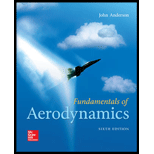
Concept explainers
For most gases at standard or near standard conditions, the relationship among pressure, density, and temperature is given by the perfect gas equation of state:
a. At a given point on the wing of a Boeing 727, the pressure and temperature of the air are
b. At a point in the test section of a supersonic wind tunnel, the pressure and density of the air are
(a)
The density at a given point on the wing of a Boeing 727.
Answer to Problem 1.1P
Explanation of Solution
Given:
Pressure
Temperature
Gas constant
Calculation:
The perfect gas equation is
Here, P is the pressure, ρ is the density, R is the specific gas constant and T is the temperature of air.
Density,
Conclusion:
Thus, the density of air at given condition is
(b)
The temperature at a given point on the wing of a Boeing 727.
Answer to Problem 1.1P
Explanation of Solution
Given:
Pressure
Density
Gas constant
Calculation:
The perfect gas equation is
Here, P is the pressure, ρ is the density, R is the specific gas constant and T is the temperature of air.
Temperature,
Conclusion:
Thus, the temperature of air at given condition is
Want to see more full solutions like this?
Chapter 1 Solutions
Fundamentals of Aerodynamics
Additional Engineering Textbook Solutions
Automotive Technology: Principles, Diagnosis, and Service (5th Edition)
DESIGN OF MACHINERY
Engineering Mechanics: Statics
Fundamentals of Heat and Mass Transfer
Vector Mechanics for Engineers: Statics and Dynamics
INTERNATIONAL EDITION---Engineering Mechanics: Statics, 14th edition (SI unit)
- The barometer of a mountain hiker reads 930 mbars at the beginning of a hiking trip and 780 mbars at the end. Neglecting the effect of altitude on local gravitational acceleration, determine the vertical distance climb. Assume g = 9.7 m/s2. Answer: 1289.00 m Fluid mechanics (please include units)arrow_forwardDuring the fall of 2005, Hurricane Wilma passed through the Gulf of Mexico. When the storm was classified as a category 5 hurricane, the pressure at the center of the hurricane was measured at 902 mbars. The highest wind velocity was 175 mph. Assuming the pressure far from the center of the hurricane was 1 bar and the air density was 1.2 kg m3 , estimate the pressure at the center of the hurricane. Comment on the difference in your prediction and the measured value and provide some rationale for the discrepancy. The answer should be p = 914 mbararrow_forwardA closed container contains 1.5m high of water, 2.5m high of oil (SG= 0.8), an unknown liquid (SG= 1.25) whose height is 1.6m, and the pressure at the top of the mixture is 17 KPa. Determine the pressure head at the bottom of the container in millimeters of mercury (SG= 13.6)arrow_forward
- A perfect gas expands polytropically with an initial volume and temperature of 0.06 m³ and 147°C. If the final volume and temperature are 0.21 m³and 21°C, what is the value of the polytropic index n?arrow_forwardA perfect gas undergoes isothermal expansion, which increases its volume by 2 dm3. The final pressure and volume of the gas are 10.2 bar and 10 dm3, respectively. What is the original pressure of the gas in Pascal? Express your answer in exponential form in 2 significant figures. Ex 1.2e1arrow_forwardIf a scuba diver descends too quickly into the sea, the internal pressure on each eardrum remains at atmospheric pressure, while the external pressure increases due to the increased water depth. At sufficient depths, the difference between the external and internal pressures can rupture an eardrum. Eardrums can rupture when the pressure difference is as little as 35 kPa. What is the depth at which this pressure difference could occur? The density of seawater is 1025 kg/m3. 1)sketch (include everything in the system) 2)solution(step by step)arrow_forward
- What is the difference between dynamin and kinematic viscosity? That is the significance of these properties of liquid?arrow_forwardIn an internal combustion engine, air at 1 atm and temperature of about 20°C is compressed by the piston to 19 of its original volume. (a) What is the temperature of the compressed air; if the pressure (absolute) increases to 40 atm. (b) An automobile cooling system holds 16 L of water. How much heat does its temperature rises from 20°C to 90°C ? [ 1 m3 = 1000 L ; Specific Heat of Water = 4186 J/kg °C ]arrow_forwardA hemispherical container, 26 inches in diameter, is filledwith a liquid at 20 ° C and weighed. The liquid weight isfound to be 1617 ounces. ( a ) What is the density of thefluid, in kg/m 3 ? ( b ) What fluid might this be? Assume standardgravity, g = 9.807 m/s 2 .arrow_forward
- If 15.7 m³ of atmospheric air at 149 degrees centigrade temperature are compressed to a volume of 11.2 m³ at zero degrees centigrade, what will be the vacuum pressure of air in kPav?arrow_forwardA nuclear reactor is cooled by liquid sodium. The liquid sodium has the following properties: dynamic viscosity = 0.41 mPa·s, specific heat capacity = 1.2 kJ/kgK, thermal conductivity 82 W/mK. Which of the following statements is correct for this scenario? please explain A The thermal boundary layer is thicker than the hydraulic boundary layer. B Heat is transferred through the fluid more easily than momentum. C The velocity varies significantly from the surface to the thickness of the thermal boundary layer. D The hydraulic boundary layer is thicker than the thermal boundary layer.arrow_forwardAn air bubble rises from the bottom of a well where the temperature is 25oC, to the surface where the temperature is 27o If the depth of the well is 5m and the atmospheric pressure is 101.325kPa, determine the following: Initial pressure inside the air bubble (P1). Volume of air bubble at state 1. Volume of air bubble at state 2. Percent increase in volume of the bubble.arrow_forward
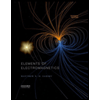 Elements Of ElectromagneticsMechanical EngineeringISBN:9780190698614Author:Sadiku, Matthew N. O.Publisher:Oxford University Press
Elements Of ElectromagneticsMechanical EngineeringISBN:9780190698614Author:Sadiku, Matthew N. O.Publisher:Oxford University Press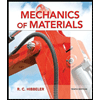 Mechanics of Materials (10th Edition)Mechanical EngineeringISBN:9780134319650Author:Russell C. HibbelerPublisher:PEARSON
Mechanics of Materials (10th Edition)Mechanical EngineeringISBN:9780134319650Author:Russell C. HibbelerPublisher:PEARSON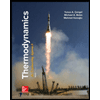 Thermodynamics: An Engineering ApproachMechanical EngineeringISBN:9781259822674Author:Yunus A. Cengel Dr., Michael A. BolesPublisher:McGraw-Hill Education
Thermodynamics: An Engineering ApproachMechanical EngineeringISBN:9781259822674Author:Yunus A. Cengel Dr., Michael A. BolesPublisher:McGraw-Hill Education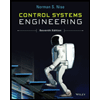 Control Systems EngineeringMechanical EngineeringISBN:9781118170519Author:Norman S. NisePublisher:WILEY
Control Systems EngineeringMechanical EngineeringISBN:9781118170519Author:Norman S. NisePublisher:WILEY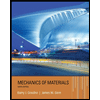 Mechanics of Materials (MindTap Course List)Mechanical EngineeringISBN:9781337093347Author:Barry J. Goodno, James M. GerePublisher:Cengage Learning
Mechanics of Materials (MindTap Course List)Mechanical EngineeringISBN:9781337093347Author:Barry J. Goodno, James M. GerePublisher:Cengage Learning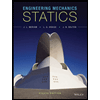 Engineering Mechanics: StaticsMechanical EngineeringISBN:9781118807330Author:James L. Meriam, L. G. Kraige, J. N. BoltonPublisher:WILEY
Engineering Mechanics: StaticsMechanical EngineeringISBN:9781118807330Author:James L. Meriam, L. G. Kraige, J. N. BoltonPublisher:WILEY





